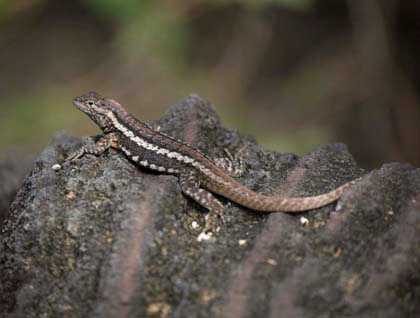Today we started our expedition on the eastern most point of the archipelago; Punta Pitt. This morning we had our last wet landing, this time on a green, sandy beach made up of an inorganic mix of volcanic ashes and tiny pieces of olivine crystals. After drying our feet and getting back in our shoes we were ready to climb through an eroded trench created by the erosion of water and wind through millions of years.
Punta Pitt is the closest point to mainland Ecuador, about 600 nautical miles away, and one of the oldest islands of the archipelago. The whole point is made of eroded tuff, creating a dramatic landscape. This dry, unforgiving land is a nesting spot for the three species of boobies found in these waters. We observed red-footed boobies nesting on trees and flying by.
The vegetation was another surprise of this site: the always colorful common carpet mat plant with its reddish coloration painting the edges of the surrounding cliff, the Galapagos Nolana with its succulent leaves, and the also endemic Chatham’s giant daisy, growing on the flanks close to the top of the craters. Then we headed back to the beach for a refreshing swim after the demanding hike.
The afternoon took us to the Kicker Rock, another noticeable tuff cone. This time we snorkeled by the edges of this volcanic formation. The external walls of the cone are colonized by many invertebrates from bright colored sponges to sea urchins and cup corals. Many sea turtles were spotted, same as Galapagos and black tip reef sharks. It was a great adventure. At the end of the afternoon everyone met at the sky deck where we circumnavigated Kicker Rock while we witnessed an impressive sunset in the company of a glass of champagne.
Another successful trip has ended: full of adventure and great company in this piece of heaven.







